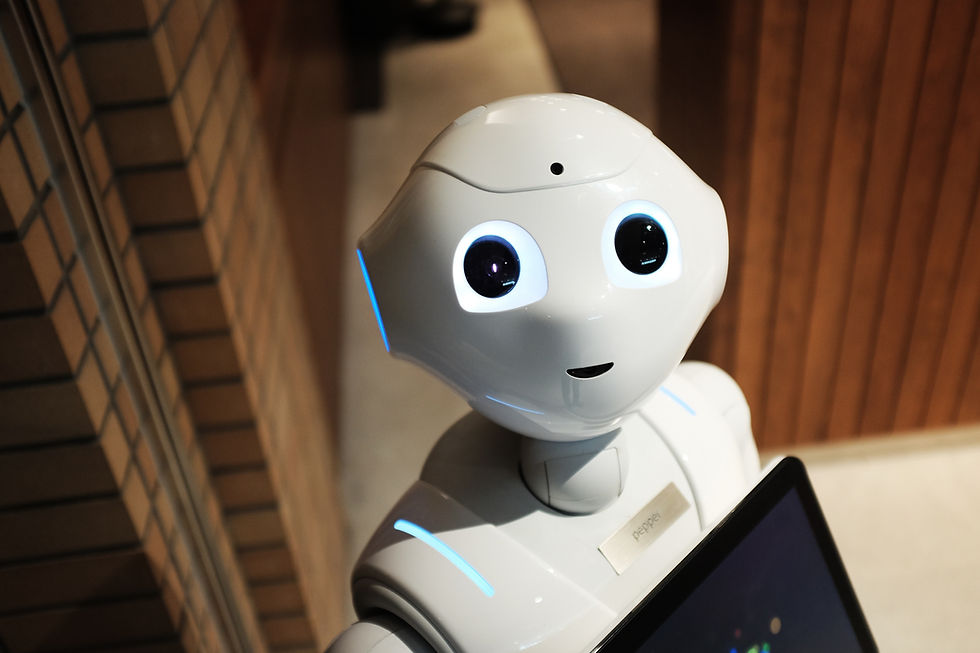Android VS. iOS
- techwriting

- Oct 13, 2019
- 6 min read
The most popular operating system today, Android and iOS are the best operating system for smartphones and of course the most used worldwide. Google's Android, looking the marketplace data till today, is the most used operating system for smartphones, but the most popular is the Apple's iOS.
They both are in marketplace battle all over the years, but here in this blog post, I will light some things and compare these operating system with pros and cons in different smartphone areas. So, make you comfortable and dive into this blog post...
1. Intro

Google's Android and Apple's iOS are operating systems used primarily in mobile technology, such as smartphones and tablets. Android, which is Linux-based and partly open source, is more PC-like than iOS and its interface and basic features are generally more customize from top to bottom. However, iOS' uniform design elements are sometimes seen as being more user-friendly.
You should choose your smartphone and tablet systems carefully, as switching from iOS to Android or vice versa will require you to buy apps again in the Google Play or Apple App Store. Android is now the world’s most commonly used smartphone platform and is used by many different phone manufacturers. iOS is only used on Apple devices, such as the iPhone.
2. Interface

iOS and Android both use touch interfaces that have a lot in common - swiping, tapping and pinch-and-zoom. Both operating systems boot to a home screen, which is similar to a computer desktop. While an iOS home screen only contains rows of app icons, Android allows the use of widgets, which display auto-updating information such as weather and email. The iOS user interface features a dock where users can pin their most frequently used applications.
A status bar runs across the top on both iOS and Android, offering information such the time, WiFi or cell signal, and battery life; on Android the status bar also shows the number of newly received emails, messages and reminders.
A comparison of some of the features of the upcoming Android N (Nougat) and iOS 10 is here. Android N highlights include:
- Split screen (even on phones that aren't large)
- Display size setting to not only zoom in but also zoom out to make the most of the screen real estate
- Customize which buttons/settings are available in the quick settings launcher
- Support for Google Daydream, a virtual reality platform
Many different manufacturers make Android phones and they often include some customization over the vanilla Android experience. e.g. HTC Sense or Samsung TouchWiz. Depending upon your device and carrier, there may be pre-installed apps that are bundled with your Android device.
3. Apps

Android gets apps from Google Play, which currently has 600,000 apps available, most of which will run on tablets. However, some Android devices, such as the Kindle Fire, use separate app stores that have a smaller selection of apps available. Many originally iOS-only apps are now available for Android, including Instagram and Pinterest, and Google’s more open app-store means other exclusive apps are also available, including Adobe Flash Player and BitTorrent. Android also offers access to Google-based apps, such as Youtube and Google Docs.
The Apple app store currently offers 700,000 apps, 250,000 of which are available for the iPad. Most developers prefer to develop games for iOS before they develop for Android. Since a recent update, the Youtube app has become unavailable on iOS, but iOS still offers some exclusive apps, including the popular game Infinity Blade and Twitter client Tweetbot.
The bottomline when comparing Google and Apple's app stores is that most popular apps are available for both platforms. But for tablets, there are more apps designed specifically for the iPad while Android tablet apps are often scaled up versions of Android smartphone apps. Developers at startups often focus on one platform (usually iOS) when they first launch their smartphone app because they do not have resources to serve multiple platforms from the get go. For example, the popular Instagram app started with iOS and their Android app came much later.
4. Speed

An iPhone 6s handily beat a Samsung Galaxy Note 7 in on speed test that involved opening several apps one by one, cycling through a set of apps twice. The same set of apps were used for both devices. The iPhone was able to complete two laps in 1 minute 21 second while it took the Galaxy Note 2 minutes 4 seconds to finish the same task. The Samsung Galaxy Note 7 boasts better hardware specs and is a much newer phone compared with the iPhone 6s.
However, it should be noted that the difference could be in how app publishers develop their apps for Android vs. iOS. Just because the same apps are on both platforms does not mean their internal workings are the same.
5. Payments

Android uses Google Wallet, an app that allows for mobile payments. Some Android phones are equipped with an NFC chip (near-field communication) that is used for making wireless payments simply by tapping the phone at the checkout counter. This service integrates with Google Wallet but is not available on all Android phones or wireless carriers. Mobile payments are supported on devices that have an NFC chip (such as Samsung's Galaxy S4 and S5) as long as they are running a version of Android newer that 4.4 KitKat.
The iOS mobile payment system is called Apple Pay. While Apple Pay was launched over a year after tap-to-pay features on some Android phones, its integration with fingerprint identification arguably makes Apple Pay easier to use. Usage of Apple Pay has certainly been significantly higher. In fact, Apple Pay has kindled interest in mobile payments and prompted Android users to discover the feature on their phones, leading to an increase in use of Google Wallet over NFC. iOS offers Passbook, an app that collects in one place tickets, reward cards, and credit/debit cards.
6. Security

Android’s applications are isolated from the rest of the system’s resources, unless a user specifically grants an application access to other features. This makes the system less vulnerable to bugs, but developer confusion means that many apps ask for unnecessary permissions. The most widespread malware on Android is one where text messages are sent to premium rate numbers without the knowledge of the user, and the sending of personal information to unauthorized third parties. As it is the more popular smartphone operating system, it is more likely to be the focus of attacks.
Malware writers are less likely to write apps for iOS, due to Apple's review of all the apps and verification of the identity of app publishers. However, if an iOS device is jailbroken and apps installed from outside Apple's store, it can be vulnerable to attacks and malware. Both iOS and Android are also vulnerable to bugs e.g. phones crashing when playing a specific video, which is a type of software bug that has affected both iOS and Android devices.
That Android devices are less secure is also evidenced by this bounty program; a company that obtains security exploits from hackers and sells them to governments has a bounty on 0-day (i.e., previously unknown) exploits for iOS ($1.5 million), Android ($200,000) and Flash ($80,000). The amounts of the bounties are a rough proxy for how easy it is to exploit these platforms in practice. So a security-conscious individual or company should use either iOS or Nexus devices.
7. Privacy

Both iOS and Android are "vulnerable" to a certain kind of privacy leak: an app installed on either platform can get a list of all other apps installed on the same device. This means your calculator app can find out that you use Tinder and relay that information back to its publisher, who is then free to use this info in whatever way they choose. In November 2014, Twitter announced that it is now tracking the list of apps its users have installed on their phones. Twitter is far from being the only company doing this.
Beyond the list of apps, when it comes to protecting users' private information, iOS wins. Until Android Marshmallow was released in 2015, when installing apps on Android, the user was presented with all the permissions that the app is requesting. This was an all-or-nothing proposition.
Pandora's app on iOS gets no such permissions. After it is installed and opened by the user, an iOS app may request additional permissions like location and access to Contacts. But the user can reject these permission requests. Even after approving the permission requests, iOS users can quickly glance at which apps have access to their Contacts and location data, and turn off access for apps with which they no longer want to share this data.



Comments